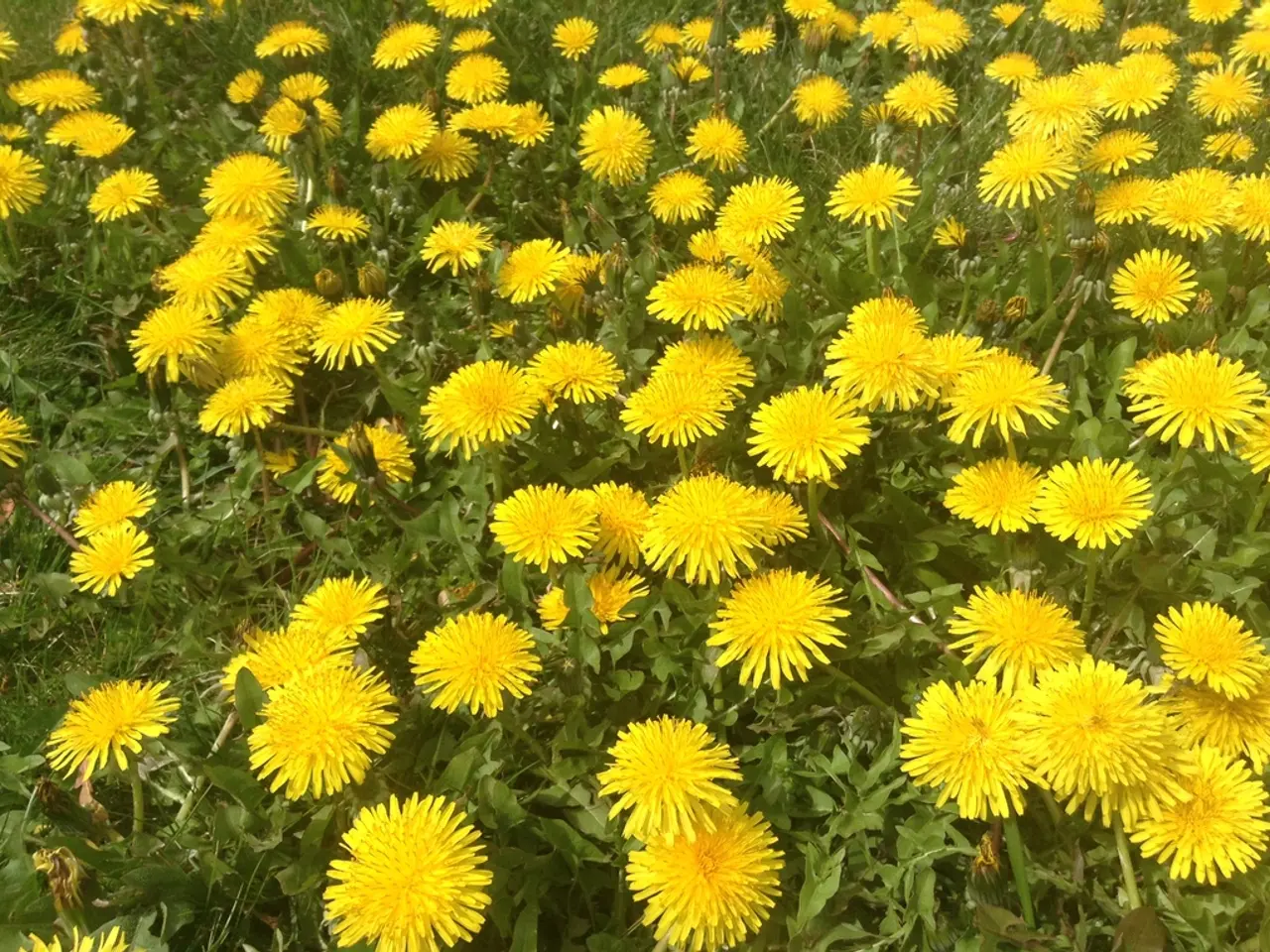North American Native Light Bulbs Identified
In the vibrant world of horticulture, native North American bulbs offer a unique charm and resilience that is hard to match. These bulbs, adapted to local conditions, can create sustainable, low-maintenance gardens while supporting local ecosystems.
One such genus is Camassia, commonly known as Camas or Quamash, wild hyacinth, and native to moist meadows across North America. Camas bulbs produce spikes of flowers in colours ranging from pale lilac or white to deep purple or blue-violet. They grow best in full sun or partial shade and tolerate wet, heavy soils, making them an excellent choice for various garden settings.
Camas flowers, star-shaped and blue to blue-violet, appear in May or June. Other notable species include the tall Camas leichtlinii, growing 2 to 4 feet tall and blooming in late May or early June, and the Cusick's Camas (C. cusickii), which grows 2.5 feet tall and blooms in May or June.
American Turk's Cap Lily is another standout, making a statement when in bloom on top of 4 to 8-foot-tall plants. Its numerous downward-facing orange-red flowers with dark spots bloom in mid to late summer.
Native irises are also great for garden use. The Dwarf Crested Iris (Iris cristata) thrives in shade to part shade with rich soil, disliking full sun and overly wet conditions. Found on forest floors in the eastern U.S., it is a perfect choice for shaded gardens.
Virginia Iris (Iris virginica) prefers sunny areas near water—marshes, swamps, and wet meadows. It grows 2-3 feet tall and is native from Newfoundland to Florida. The Northern Blue Flag Iris (Iris versicolor) is native to northeastern U.S. and Canada and thrives near water bodies such as streams and lakes.
When it comes to care, most bulbs are planted in the fall, 6–8 weeks before the first frost, to allow root establishment before winter. They generally prefer moderate watering and a range of light conditions, depending on the species.
For example, Camassia likes full sun to partial shade, while the Dwarf Crested Iris prefers shade to part shade. Most native bulbs are cold-hardy but may need protection if temperatures drop extremely low or if planted in unsuitable zones.
Using a balanced bulb fertilizer or bone meal at planting and again in early spring when new growth emerges can encourage healthy blooms.
While some native bulbs, like Mariposa Lilies (Calochortus), are notoriously difficult to grow in the Midwest, others, such as the Wood Lily, native to a wide range of eastern North America, including parts of Iowa, are more adaptable. Wood Lilies grow 1 to 3 feet tall and tolerate a wide range of soil conditions.
Trout lily (Erythronium americanum) is a lovely addition to the shade garden, with mottled green leaves emerging in spring, followed by solitary yellow flowers with six petals. Ornamental Onions, while not well-represented in the horticulture trade, are worth seeking out for their unique charm.
By choosing native bulbs for your garden, you not only create a beautiful and sustainable space but also honour the rich history of these plants, many of which have been used as edible food sources by indigenous peoples for centuries.
- Camas, a native North American bulb, produces flowers in various colors and grows well in full sun or partial shade, even in wet, heavy soils, making it an excellent choice for various home-and-garden settings.
- American Turk's Cap Lily, standing 4 to 8 feet tall, is a striking addition to lawns, with numerous downward-facing orange-red flowers blooming in mid to late summer.
- Native irises like the Dwarf Crested Iris and the Virginia Iris are great for gardening, thriving in different light conditions and soil types. The Dwarf Crested Iris prefers shade to part shade, while the Virginia Iris prefers sunny areas near water.
- When it comes to caring for these native bulbs, they are generally planted in the fall, prefer moderate watering, and can benefit from a balanced bulb fertilizer or bone meal at planting and again in early spring when new growth emerges.
- By incorporating native bulbs like Trout lily and Ornamental Onions into your gardening, you not only enhance your lifestyle with a beautiful and sustainable home-and-garden but also honor the rich historical significance of these plants, many of which have been used as food sources by indigenous peoples for centuries.




